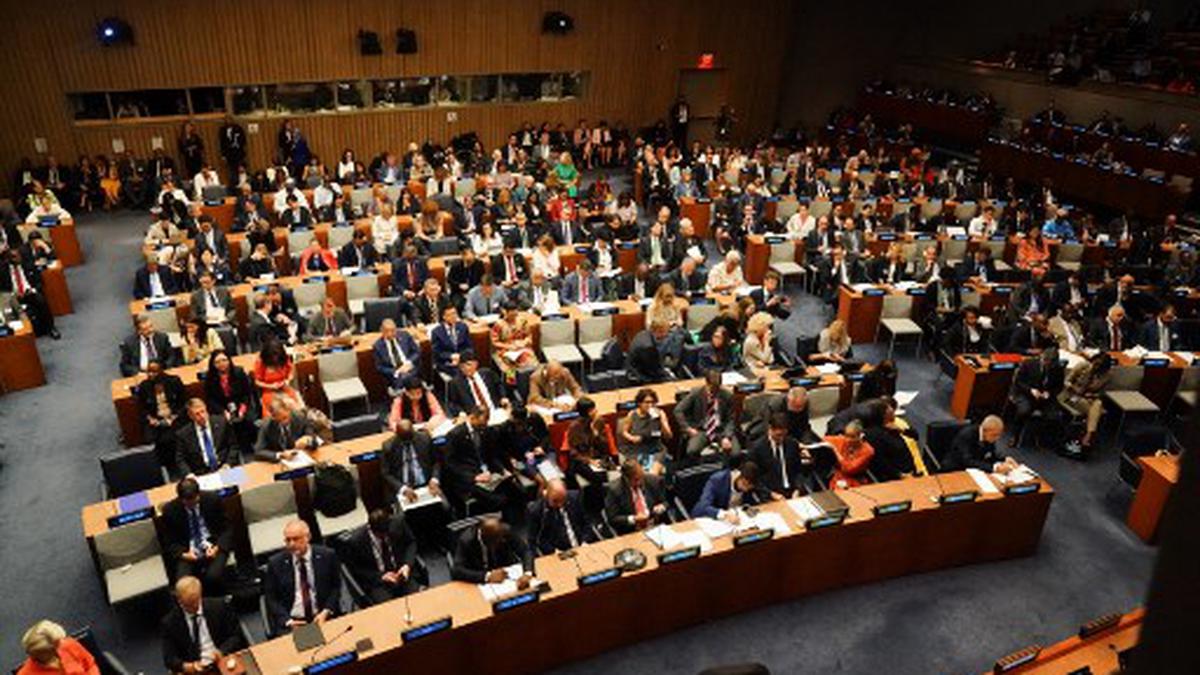
India, U.S., China absent at UN’s climate summit
The Hindu
In the run-up to the summit, about 100 heads of state had written in response to a call from Secretary General Antonio Guterres to ramp up action to address the climate crisis
The Climate Ambition Summit (CAS) in New York, as part of the United Nations General Assembly, that concluded on September 21, was marked by the absence of major economies whose actions significantly influence the future of global emissions.
China, United States and India — who collectively account for about 42% of global greenhouse gas emissions and are the top three emitters in that order — were all absent from the CAS that was designed, according to the U.N., to “showcase leaders who are “movers and doers”... and have credible actions, policies and plans to keep the 1.5°C degree goal of the Paris Agreement alive and deliver climate justice to those on the front lines of the climate crisis.”
In the run-up to the summit, about 100 heads of state had written in response to a call from Secretary General Antonio Guterres to ramp up action to address the climate crisis. However only representatives from 34 states and 7 institutions were given the floor on the day of the summit. India’s neighbours Sri Lanka, Nepal and Pakistan were among the listed speakers and emerging economies such as South Africa and Brazil were also on the list. The European Union, Germany, France and Canada were also on the podium.
The criteria for countries to be considered for a speaking slot at the summit were: that they would be expected to present updated pre-2030 Nationally Determined Contributions (as agreed in Glasgow); updated net-zero targets; energy transition plans with commitments to no new coal, oil and gas; fossil fuel phase-out plans; more ambitious renewable energy targets; Green Climate Fund pledges; and economy-wide plans on adaptation and resilience. All the “main emitters” and notably all G-20 governments would be asked to commit to presenting, by 2025, more ambitious economy-wide Nationally Determined Contributions featuring absolute emissions cuts and covering all gases.
“The Climate Ambition Summit this year set a high bar for participation...The Secretary-General’s Climate Action Team engaged governments, as well as businesses and local authorities with transition plans to reach net zero in line with the UN-backed credibility standard and accountability of net zero pledges,” Stéphane Dujarric, spokesperson for the UN Secretary General, told The Hindu in an email. He didn’t clarify if India had put in a request, or even participated, in the summit. An official in the Ministry of Environment, Forests and Climate Change also declined The Hindu’s request for information.
India last updated its climate pledges in 2022 of reducing emissions intensity — or the volume of emissions per unit of gross domestic product (GDP) — by 45% from 2005 levels by 2030, a 10% increase from what it agreed to in 2015. The government committed to meet 50% of its electric power needs from renewable, non-fossil fuel energy sources — up from 40% committed at the Paris agreement. It assured to create an additional carbon sink of 2.5 to 3bn tonnes of CO2-equivalent [GtCO2e] through additional forest and tree cover by 2030. In 2021, Prime Minister Narendra Modi committed to India achieving net zero by 2070. The scientific assessment is that India’s commitment, alongside similar commitment by G-20 economies are insufficient to keep temperatures from keeping below 2C by the end of the century. However, India’s low per capita emissions and contribution to the carbon already in the atmosphere has led other analysts to suggest that India has committed to “more than its fair share” to keeping to the Paris-agreed limits.
“Our focus here is on climate solutions — and our task is urgent. Humanity has opened the gates to hell,” Mr. Guterres said in his address, “Climate action is dwarfed by the scale of the challenge. If nothing changes we are heading towards a 2.8 degree temperature rise — towards a dangerous and unstable world.”













